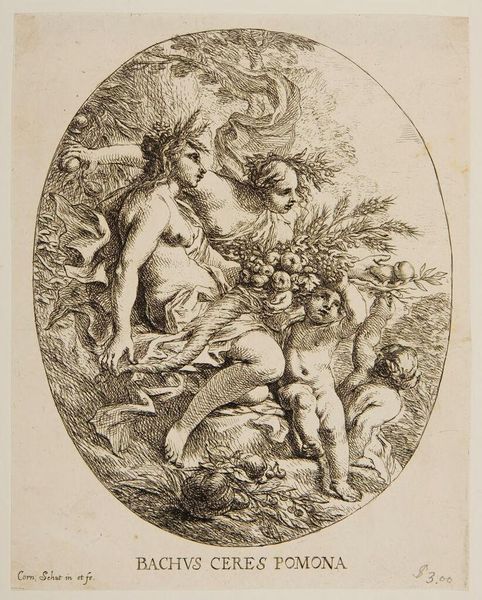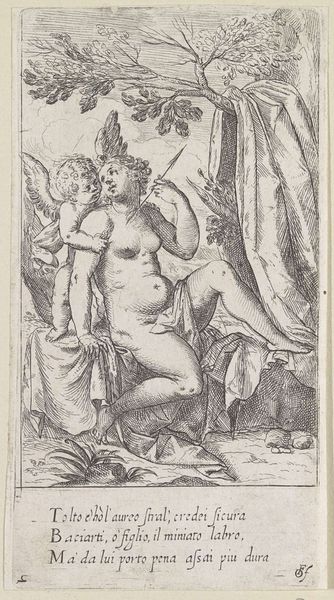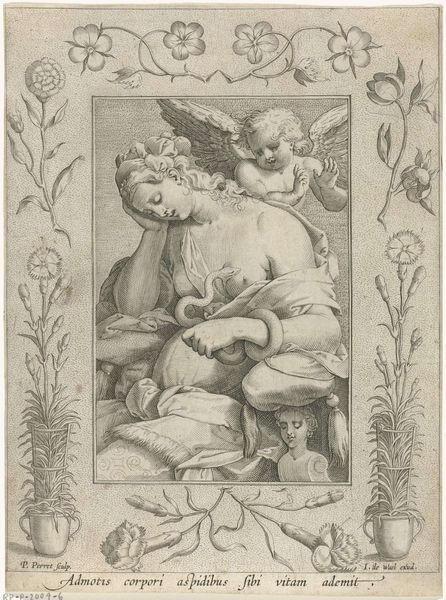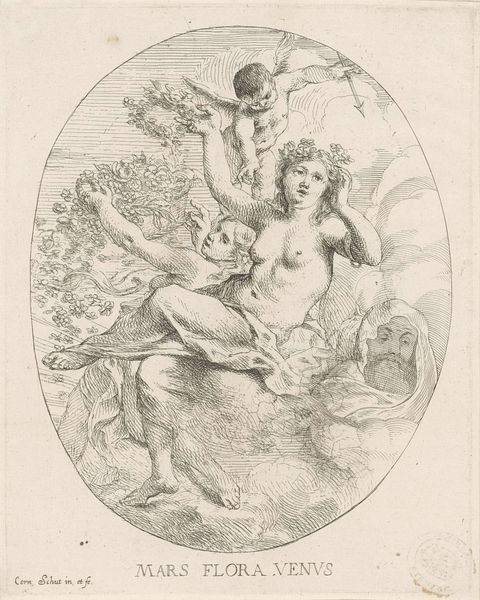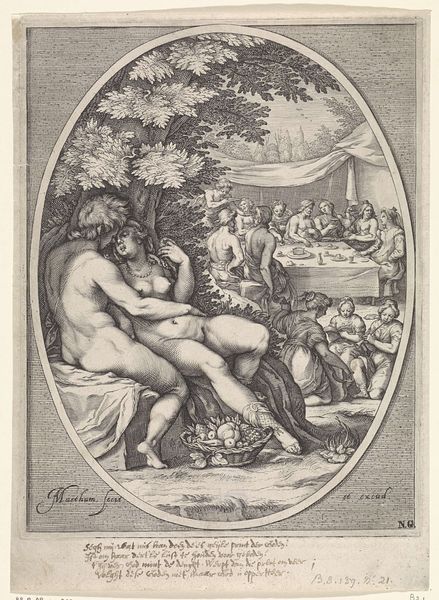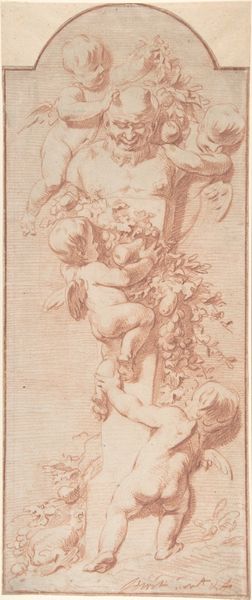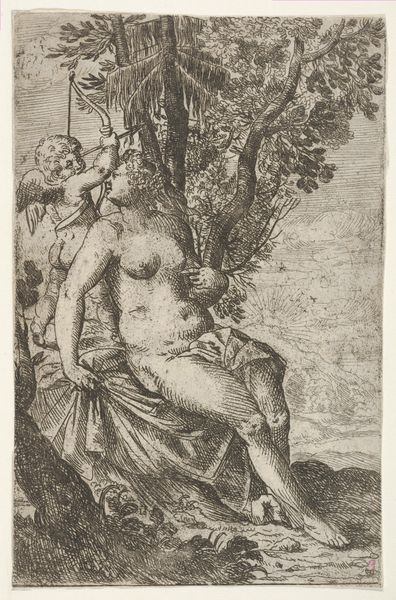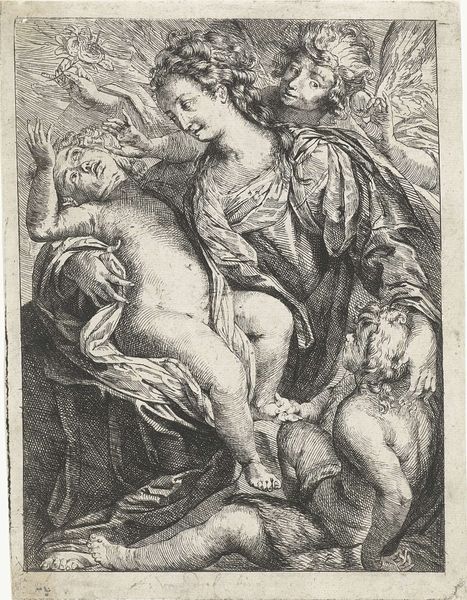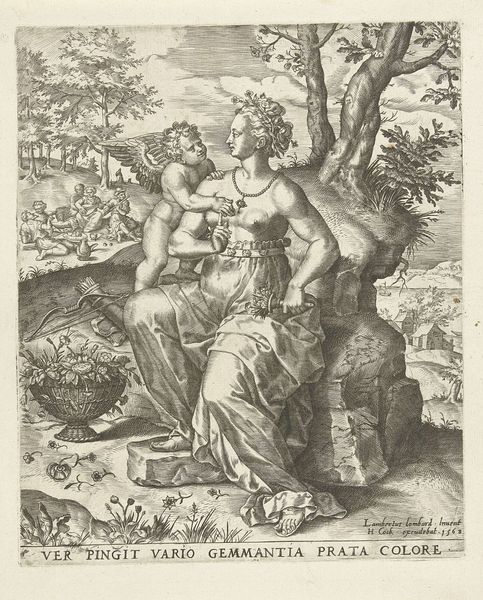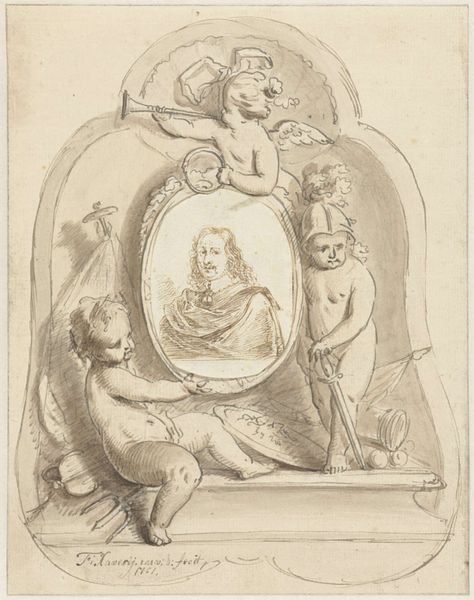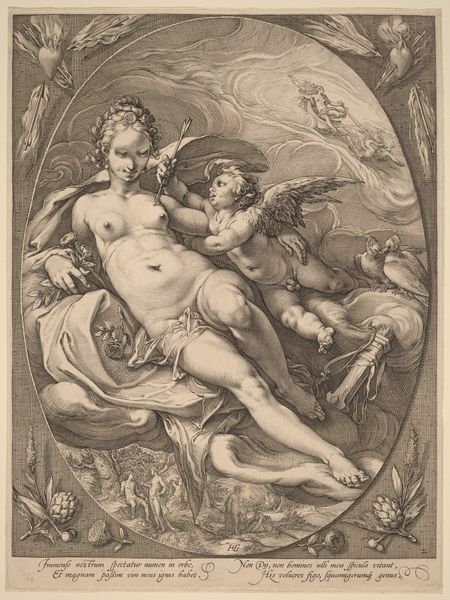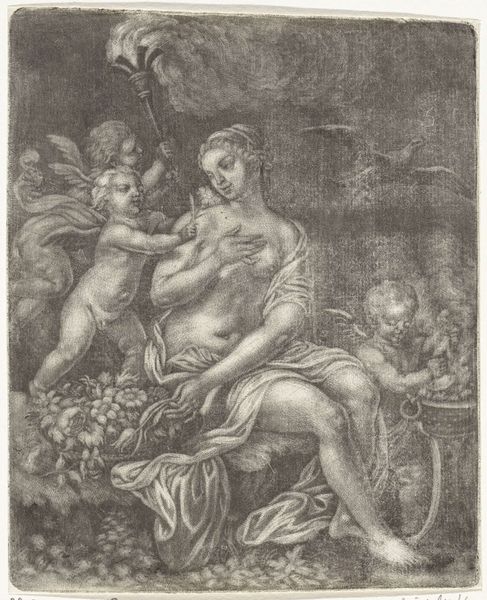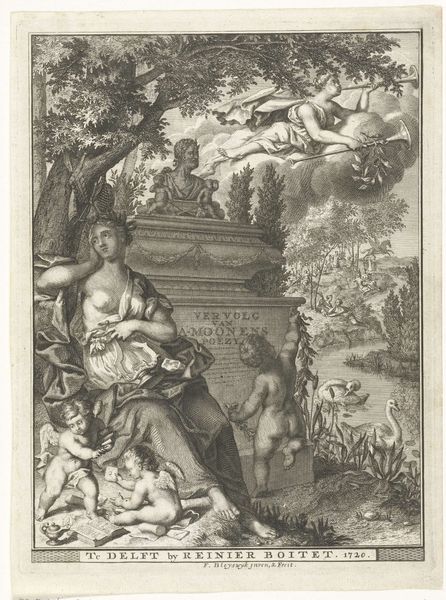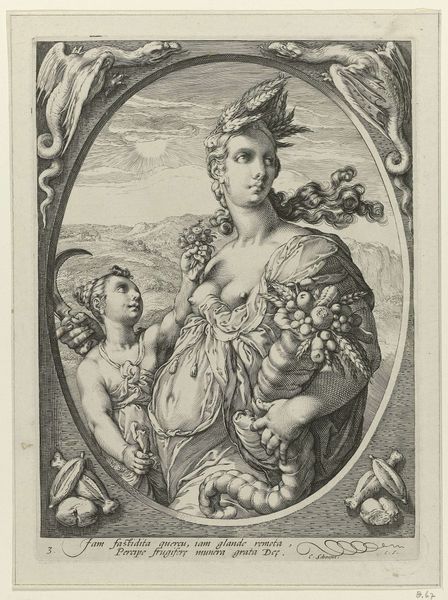
engraving
#
allegory
#
baroque
#
old engraving style
#
classical-realism
#
figuration
#
line
#
history-painting
#
engraving
Dimensions: height 243 mm, width 193 mm
Copyright: Rijks Museum: Open Domain
Curator: At first glance, it’s intricate and dreamlike, a swirl of figures caught in a classical reverie. The use of line and shadow creates a vibrant, almost bustling image despite its delicate execution. Editor: Indeed. The work before us is “Bacchus, Ceres en Pomona,” an engraving dating roughly from 1618 to 1655 and currently residing at the Rijksmuseum. It's by Cornelis Schut, known for his contributions to the Baroque style in the Netherlands. Curator: Schut really packs so much allegorical symbolism into one image. We've got Bacchus, the god of wine, Ceres, the goddess of agriculture, and Pomona, the goddess of fruitful abundance, each bringing their signature bounty. Editor: The choice of these three is interesting from a socio-economic perspective, representing cornerstones of sustenance and pleasure in the early modern world. Did this engraving circulate among specific groups, perhaps related to agriculture or the wine trade? Curator: Quite possibly. Engravings were a key medium for disseminating ideas and artistic styles. Notice how Bacchus, with his vine crown, hints at festive indulgence, contrasted by Ceres’ more maternal, grounding presence, embodying harvest and nurturing. Editor: Pomona as well with her fruits speaks to me of seasonal cycles and perhaps also to something a bit darker: the fragility of abundance and the inevitability of winter. Her gifts have an emotional weight connected to the changing of seasons and all that evokes. Curator: That connects to a long history of representing cyclical time, nature's bounty as allegory for human conditions. Its classical realism provides a language for communicating shared values of abundance but within defined social parameters, doesn’t it? Editor: Precisely. And it invites the viewer to consider those parameters – the very idea of an ordered, fruitful existence as envisioned by the dominant culture. A concept often celebrated and heavily reproduced through this medium. Curator: Looking closer, it's clear that Schut utilized line in such a nuanced way. It gives the forms volume and creates an overall soft tonal effect. It seems so different from a high Italian Baroque. Editor: Seeing this from my iconographical standpoint has given me insight into cultural memories of the past, and understanding the endurance of the emotional potency of its symbology. Curator: It serves as a poignant reminder of how artistic movements interact, adapting traditions for localized contexts and distinct audiences, and to me it speaks volumes about a region in conversation with broader European trends.
Comments
No comments
Be the first to comment and join the conversation on the ultimate creative platform.
